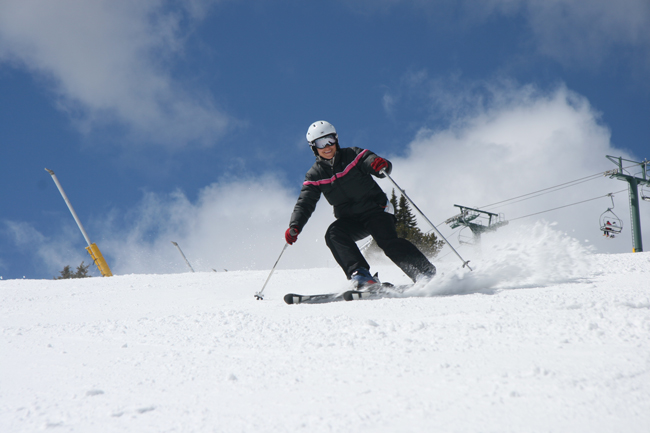Design your own program to improve skiing performance and prevent injuries

We are only a couple weeks away from the beginning of ski season! Is your fitness level up to par? Aside from having fun, most skiers have two main goals: to improve performance and endurance on the slopes, and preventing injuries. The limiting factor in both of these cases is fatigue. A strong skier is one who has balanced muscles, good balance, and a decent level of overall fitness.
Components of a program to improve skiing fitness
Assessing muscle imbalances and correcting them:
We all have muscle imbalances that inhibit performance and greatly increase the risk of injuries. Correcting these imbalances involves specific exercises to strengthen weak muscles and lengthen tight ones. For example, many people have strong quads relative to their hips and glutes, therefore should start by doing hip and glute specific exercises. Lengthen tight muscles by static stretching and using a rumble roller.
Core training:
Core training involves working the abdominals, obliques, and back. Recommended exercises are front & side planks, trunk rotations using a weighted medicine ball in V-sit position, ball crunches, back extensions, cable and barbell rows. Doing these core exercises correctly is imperative, if unsure ask a fitness professional.
Balance training:
Falls account for the majority of skiing injuries. Balance and stabilization training will dramatically improve skiing fitness and control. Try doing BOSU ball squats and lunges, single leg side hops, single leg squats, and upper body exercises while standing on one leg.
Skiing fitness specific exercises:
It is important to work the hips, glutes, quads, and hamstrings equally to achieve well-rounded lower body fitness. This will improve performance and reduce the risk of injuries. Exercises include side walks with band around ankles, front and side lunges, squats using barbell or dumbbells, deadlifts, leg press, abductor/adductor machines, and step-ups using a box. Don’t forget to squeeze your glutes!!
Cross-Training:
Once the season is underway it’s important to engage in exercises other than skiing. The purpose of cross-training is to engage in different movement patterns to prevent over-use injuries. Try biking, swimming, or jogging for cardio, and continue strength training twice per week. Don’t forget to work your upper body. Upper body strength will improve skiing fitness level.
Stretch and foam roll:
Do not neglect flexibility training. It is important to follow through consistently with flexibility training to prevent injuries. Target the hip flexors, hamstrings, quads, IT bands, calves,and lats.
To conclude, the bottom line is to train for well-balanced body that is flexible and fit. Primary focus should be on working the core, glutes, legs, and back. Have a fun and injury-free season!